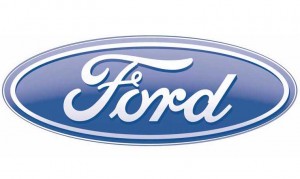Ford is out of hock, so to speak. With Moody’s Investor’s Services upgrading the maker’s debt to “investment grade,” the second-largest automaker has done more than just fulfill the key goal of CEO Alan Mulally. It regains control of assets that include its factories, brand names and trademarks and the familiar Blue Oval logo.
While Ford continued to use them it put those and other assets up as collateral in 2006 to secure $23.5 billion in credit. That move, approved shortly after Mulally joined Ford from Boeing, where he had been a senior executive, helped the maker avoid the bankruptcy that nearly crushed its cross-town rivals General Motors and Chrysler.
“The key factor in our considering an investment grade rating for Ford was whether or not the company would be able to sustain its strong performance,” said Moody’s senior vice president Bruce Clark. “We concluded that the improvements Ford has made are likely to be lasting.”
The upgrade by Moody’s follows a similar move by Fitch Ratings last month. The only other debt rating giant yet to weigh in is Standard & Poor’s, but Ford only needed two of the three to upgrade it to regain control of those key assets from the banks that had taken control of them nearly six years ago.
“This is one of the best days that I can remember,” said Ford Chairman Bill Ford Jr., who began crafting the bailout plan along with several key executives including Ford President of the Americas Mark Fields just as Mulally came onboard.
There had been some concerns that Moody’s and S&P might not follow Fitch’s lead after Ford delivered mixed results for the first quarter of 2012. Its earnings were hurt by problems in a number of key markets, notably including Europe. But Ford did especially well in North America, and Moody’s cited the automaker’s low breakeven in the home market as a key reason for the upgrade.
Prior to the U.S. industry’s collapse, Ford needed to sell 3.4 million vehicles in North America to break even. But it has cut its labor costs by roughly a third through a variety of union concessions and further reduced costs by closing some redundant plants. Today, Moody’s noted, Ford only needs to sell 1.8 million vehicles in North America to make a profit – though it shipped 2.7 million during the 12 months ending on March 31st.
The ratings firm isn’t the only one to deliver an upbeat assessment this month. The new Car Wars study by Merrill Lynch predicts Ford will see its market share jump 0.8 points, to 15.3% by 2016 – on top of the added sales generated by the industry’s overall recovery.
The Merrill Lynch study emphasized the wave of new products coming from Ford and, for its part, Moody’s cited what it called “robust” product plans.
The upgrade and consequent recovery of assets delivers a psychological victory for the maker, generally seen as gaining on both its domestic and import rivals. But there’s also a tangible benefit in that Ford should now gain access to lower-cost credit. That could be especially helpful as it continues to buoy its European operations. But it would be even more helpful in China, where the maker is investing over $1 billion to add a new assembly plant and expand operations at existing facilities.
Ford was a latecomer to the booming Chinese automotive market and lags well behind key rivals GM and Volkswagen AG, but officials last month announced plans to double sales there by mid-decade.
Mulally has termed the big debt Ford took on a “giant home improvement loan.” But it was initially perceived as potentially the beginning of the end for the century-old automaker. It was an unusual approach to securing credit, auto manufacturers seldom offering the banks such essential assets as their corporate logo, never mind factories and brand names.
What that blue oval is worth is a matter of speculation, but in its annual study of brand value, Interbrand said the Ford marque is worth $7.5 billion, which put the company 50th on its list of 100 top brands.
Ford has delivered a series of surprises over the last half decade, sharply rising in the quality charts, boosting sales and market share and – perhaps most significantly – steering clear of the bankruptcy courts, unlike GM and Chrysler. Some analysts believe the maker has picked up at least some business from buyers who steer clear of its domestic rivals because of opposition to the federal automotive bailout.
The downside is that Ford emerged from the latest recession with far more debt than its Detroit rivals, though Mulally has made a point of paying that down. Debt now stands at $13.5 billion, with Ford on target to bring that figure down to $10 billion by 2015.
Achieving this target has yet again raised speculation about the CEO’s future plans. Still boyish despite his 66 years, Mulally stressed earlier this month that he is not setting a timetable for departure, adding that the ratings upgrade “changes none of my plans to continue to serve this great corporation.”

